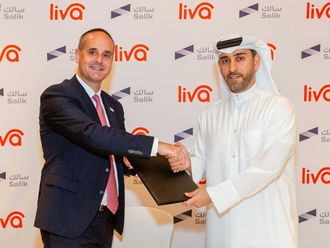Saudi Arabia's 9th development plan, covering the period 2010 to 2014, attempts to address key challenges facing the kingdom. The plan's key features include allocating more than half of planned expenditures on human resources development, in turn designed into making Saudi nationals equipped with job market requirements in terms of education, training and skills.
Clearly, the authorities appreciate the financial requirements for meeting the challenges, and this possibly explains the logic behind allocating a sum of $385 billion (Dh1,412.95 billion).
The figure is up by 67 per cent when compared to total spending package of the 8th development, undoubtedly a substantial growth. The amount is considerable by virtue of being on par value with the kingdom's gross domestic product (GDP) in 2009.
Positive start
Implementation of the five-year programme has started on a positive note, as evidenced by the agreement to spend $144 billion for fiscal year 2010. Some $70 billion, or almost half of budgetary spending, is destined for developmental projects.
Projects envisaged include expansion of the road network and new power and water plants, construction of numerous educational and training institutes.
Of $385 billion spending package, some 50.6 per cent is allocated for human resources development, 19 per cent for social development and health, 15.7 per cent on economic resources, 7.7 per cent for transportation and telecommunications and 7 per cent on municipality services and housing projects.
The plan is exceptionally generous on human resources and for good causes. One delicate problem the kingdom is encountering unemployment amongst its nationals, a matter that may not be allowed to continue for numerous reasons.
However, the latest development plan calls for reducing the jobless rate from 9.6 per cent in 2009 to 5.5 per cent by end-2014. To be sure, recently published official statistics pointed out to unemployment rate at 10.5 per cent in August 2009, with some 449,000 Saudi nationals being unemployed.
Sadly, a large majority of the unemployed happened to be nationals in the age group of 20 to 24 years. This is a critical age, as extremist groups tend to find recruits amongst unemployed youths.
Also, this level of unemployment suggests that the Saudi economy could not realise the contributions of the youth. Moreover, the plan calls for developing 25 technical colleges and fitting many other institutes with latest technological means.
Other schemes include opening some 117 hospitals and a number of clinics.
Human development
Such investments stand to improve ranking of Saudi Arabia on human development index (HDI). The 2009 Human Development Report, in turn issued by the United Nations Development Programme (UNDP), ranked Saudi Arabia number 59 amongst 182 nations.
This was the worst ranking amongst Gulf Cooperation Council (GCC) countries in the annual survey, with Kuwait being in the forefront with ranking number 31 worldwide.
The HDI is based on results of three variables, namely life expectancy at birth or health, education and income based on purchasing power parity basis.
Still, sustained investments on education and training or turning the economy into a knowledge-based one should facilitate achieving the goal of lessening dependence on foreign nationals. The plan calls for increasing the number of nationals into total workforce from around 48 per cent in 2009 to 53.6 per cent by 2014. The goal is a reasonable one and not excessively ambitious for a span of five years.
The writer is a Member of Parliament, Bahrain












